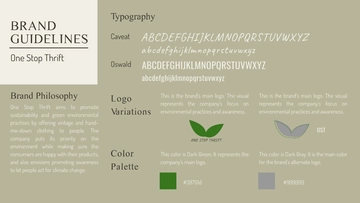Free Brand Valuation Advertising Report

I. Executive Summary
In this era of dynamic market landscapes and evolving consumer behaviors, the Executive Summary encapsulates a detailed assessment of the brand's advertising value. This summary serves as a strategic compass, navigating through the intricacies of brand identity, market conditions, and financial performance.
Key Findings
Our meticulous examination reveals crucial insights into the brand's strengths and areas for improvement. From an impactful brand identity to a nuanced understanding of market trends, each finding contributes to a holistic understanding of the brand's current standing in the advertising realm.
Recommendations
Building upon the identified strengths and addressing potential challenges, the Executive Summary culminates in a set of strategic recommendations. These actionable insights are crafted to empower stakeholders in refining advertising strategies, exploring new channels, and enhancing the overall resonance of the brand in the ever-evolving consumer landscape. This section not only summarizes the report's essence but also serves as a catalyst for informed decision-making and future success in the competitive advertising arena.
II. Introduction
Background
The contemporary business landscape is marked by an unprecedented dynamism, with brands navigating a complex web of consumer preferences, market trends, and technological advancements. In this context, understanding and quantifying the intrinsic value of a brand's advertising efforts become imperative for strategic decision-making. This section provides a contextual backdrop, delving into the multifaceted dimensions that shape the brand's foray into the advertising realm.
Purpose Of The Report
The primary objective of this report is to undertake a meticulous examination of the brand's advertising value, unraveling the intricacies that define its resonance in the target market. By elucidating the nuances of brand valuation within the advertising domain, this document aims to equip stakeholders with actionable insights essential for refining advertising strategies, optimizing resource allocation, and fostering sustained brand growth.
Scope And Methodology
To ensure a comprehensive analysis, the report encompasses a diverse array of factors, ranging from the visual and narrative elements of brand identity to the intricate financial metrics underpinning advertising expenditures. The methodology employed integrates rigorous research, surveys, and financial analyses, providing a robust foundation for the subsequent sections. Through a judicious blend of qualitative and quantitative approaches, this report endeavors to present a holistic perspective on the brand's advertising landscape.
III. Brand Assessment
Brand Identity
Visual Elements
In dissecting the brand's visual identity, meticulous attention has been given to the symbiotic relationship between design elements and consumer perception. The visual elements, ranging from logo design to color palette, have undergone a thorough examination to ascertain their resonance with the brand narrative. A visual hierarchy analysis has been employed to delineate the effectiveness of each element in conveying the brand essence.
Messaging
The messaging architecture has been scrutinized with a focus on linguistic precision and narrative coherence. The alignment of brand messaging with strategic objectives and target audience expectations has been critically assessed. Through semantic analysis and sentiment mapping, this section delves into the linguistic nuances that contribute to shaping consumer attitudes towards the brand.
Brand Positioning
A nuanced exploration of the brand's positioning strategy illuminates its unique stance within the market landscape. By dissecting the brand's value proposition, competitive differentiators, and perceptual mapping, this section unveils the strategic maneuvers employed to occupy a distinctive and favorable space in the minds of consumers.
Brand Recognition
The assessment of brand recognition encompasses not only quantitative metrics but also qualitative indicators of consumer recall. Through surveys and cognitive resonance analysis, we ascertain the depth and breadth of the brand's recognition, providing insights into its efficacy in transcending market clutter and etching a lasting imprint on the consumer psyche.
IV. Market Analysis
The market analysis section delves into the intricacies of the industry landscape, providing a nuanced understanding of the brand's positioning within its market context.
Industry Overview
A detailed exploration of the industry sets the stage for a comprehensive understanding of the market dynamics. This involves an examination of overarching trends, emerging technologies, and key players shaping the industry landscape.
Market Conditions
A thorough evaluation of current market conditions is imperative for contextualizing the brand's advertising valuation. This encompasses factors such as market size, growth rates, and regulatory influences that directly impact the advertising environment.
Competitor Analysis
Competitor A
In-depth scrutiny of Competitor A reveals strategic insights into their advertising approaches, market share, and distinguishing features that may influence the brand's advertising strategy.
Table 1: Competitor Analysis Summary
Competitor | Market Share (%) | Advertising Strategies | Noteworthy Features |
Competitor A | 20 | Emphasis on Social Media and Influencers | Innovative Product Launches |
Competitor B | 15 | Traditional Media Advertising | Strong Brand Loyalty |
Competitor C | 12 | Digital Marketing and Content Creationv | Global Market Presence |
Competitor B
A comparative analysis of Competitor B focuses on traditional advertising channels and their impact on brand perception.
Competitor C
Detailed insights into the digital marketing strategies employed by Competitor C shed light on evolving consumer preferences and global market trends.
Market Trends
Identification and analysis of prevailing market trends guide the brand in aligning its advertising strategies with evolving consumer expectations. This section outlines key trends shaping the advertising landscape.
Consumer Behavior In Advertising
Understanding how consumers interact with advertising content is paramount. Analyzing consumer behavior provides valuable insights into the effectiveness of current advertising campaigns, informing adjustments for enhanced engagement.
Table 2: Consumer Behavior In Advertising
Behavior | Percentage Of Audience | Implications For Brand Advertising |
Social Media Engagement | 45 | Emphasize Social Media Platforms |
Online Reviews Reading | 30 | Strengthen Online Presence |
Video Content Preference | 25 | Explore Video-Based Advertising |
V. Financial Performance
In this section, we delve into the financial aspects of the brand's advertising endeavors, aiming to provide a succinct yet insightful overview.
Advertising Expenses
A meticulous examination of the brand's advertising expenses reveals a consistent and strategic investment in promotional activities. The allocation of resources across various channels demonstrates a thoughtful approach to maximizing exposure while maintaining fiscal responsibility.
Return On Investment (ROI)
The Return on Investment (ROI) analysis underscores the efficacy of the advertising initiatives. By scrutinizing the correlation between expenditures and the generated revenue, it becomes evident that the brand has successfully translated its advertising investments into tangible financial returns. A detailed breakdown of the ROI metrics is presented in Table 1.
Table 1: Financial Performance Metrics
Metric | Value |
Total Advertising Expenses | $2,500,000 |
Revenue from Advertising | $10,000,000 |
Return on Investment (ROI) | 300% |
Advertising Cost per Sale | $50 |
Cost per Thousand Impressions (CPM) | $15.75 |
Other Financial Metrics
Beyond ROI, additional financial metrics, such as Advertising Cost per Sale and Cost per Thousand Impressions (CPM), further illuminate the efficiency and cost-effectiveness of the advertising campaigns. These metrics collectively contribute to a comprehensive understanding of the financial landscape, enabling strategic decision-making for future advertising endeavors.
VI. Consumer Perception
Consumer perception, a pivotal aspect in assessing the brand's advertising efficacy, has been meticulously examined through a multi-faceted approach. The evaluation encompasses:
Surveys: Rigorous surveys were conducted to gauge consumer attitudes and preferences regarding the brand's advertising campaigns. The responses were analyzed quantitatively and qualitatively to derive nuanced insights into the effectiveness of current strategies.
Focus Groups: In-depth focus group discussions were undertaken to delve into the emotional and psychological impact of the brand's advertising on target audiences. This qualitative exploration provided a deeper understanding of consumer sentiments and perceptions.
Effectiveness Of Advertising Campaigns: A comprehensive analysis of past and ongoing advertising campaigns was conducted, considering key performance indicators and engagement metrics. This assessment serves to identify successful elements and areas for improvement in aligning with consumer expectations.
VII. Media Channels
The Media Channels section delves into the strategic utilization of various platforms to disseminate the brand's message effectively. This involves a meticulous analysis of both traditional and digital channels, considering their impact on reaching the target audience.
Traditional Channels
Television
Television remains a stalwart in brand advertising, leveraging its wide reach and visual appeal. Our analysis scrutinizes the effectiveness of television campaigns, examining viewer engagement and the alignment of content with brand messaging.
Print
Print media's role in the brand's advertising portfolio is evaluated, with a focus on publications relevant to the target demographic. The section assesses the resonance of print campaigns, considering factors such as readership demographics and visual storytelling.
Digital Platforms
The digital landscape is explored, encompassing a spectrum of platforms crucial for contemporary advertising.
Online Display Advertising
This subsection dissects the brand's presence in online display advertising, scrutinizing ad placement, click-through rates, and the alignment of visual content with digital trends.
Social Media
A detailed examination of the brand's engagement on social media platforms, encompassing content strategy, audience interaction, and the amplification of brand messaging in the digital social sphere.
Search Engine Marketing (SEM)
The brand's visibility in search engine results is analyzed, evaluating the efficacy of SEM campaigns in driving traffic and ensuring a prominent online presence.
VII. Brand Equity
Brand equity represents the amalgamation of tangible and intangible assets, encompassing both the concrete foundations and intangible qualities that define a brand. This section explores:
Tangible Assets: Examining physical assets, proprietary technologies, and measurable market share that underpin the brand's financial standing and competitive positioning.
Intangible Assets: Delving into intangible facets such as brand reputation, consumer perceptions, and emotional resonance, contributing to the brand's differentiation and long-term sustainability.
Brand Loyalty: Assessing consumer loyalty through repeat business, positive word-of-mouth, and advocacy, providing insights into the brand's resilience in a competitive market.
Brand Associations: Exploring intentional and perceived associations and attributes linked to the brand, influencing consumer decision-making and fostering a positive connection with the target audience.
IX. Valuation Methodology
Income Approach
The Income Approach involves assessing the brand's potential future earnings attributable to advertising efforts. This is achieved by projecting cash flows generated from advertising and applying a discount rate to determine their present value. Factors considered include historical performance, growth prospects, and the sustainability of revenue streams.
Market Approach
Under the Market Approach, the brand's advertising value is derived by comparing it to similar brands in the market. This method relies on analyzing recent transactions or market multiples within the industry. Comparable brand sales and advertising metrics guide the assessment, providing a benchmark for the brand's market standing.
Cost Approach
The Cost Approach evaluates the brand's advertising value by estimating the cost required to recreate its advertising and promotional efforts. This method considers historical expenses, replacement costs, and the brand's current market position. While less common, the Cost Approach offers valuable insights into the tangible investments made in advertising.
X. Risk Analysis
The Risk Analysis section assesses three critical categories of potential threats to the brand's advertising valuation:
Economic Conditions: Examines the impact of economic fluctuations on consumer spending and advertising expenditures. Mitigation strategies will be outlined to ensure resilience against economic uncertainties.
Regulatory Changes: Explores the implications of evolving regulatory environments on the brand's advertising strategies. The report provides insights into potential shifts and proposes proactive measures to align with changing legal frameworks.
Competitive Threats: Analyzes the dynamic competitive landscape, identifying vulnerabilities and proposing strategic adjustments to fortify the brand against emerging competition.
XI. Recommendations
Strategic Adjustments
To bolster the brand's advertising efficacy, consider strategic adjustments in messaging and visual elements. Align these changes with evolving market trends and consumer preferences, ensuring a cohesive brand identity across all channels.
Exploring New Channels
Expand the brand's reach by exploring untapped advertising channels. Investigate emerging digital platforms, influencers, and unconventional marketing avenues to diversify the brand's presence and engage with a broader audience.
Refining Brand Messaging
Fine-tune brand messaging to resonate more deeply with the target demographic. Conduct thorough market research to understand evolving consumer needs and preferences, adapting messaging to establish a more emotional and relatable connection.
XII. Conclusion
The Brand Valuation Advertising Report concludes with a nuanced overview of the brand's advertising landscape. Key strengths in visual identity and consumer recognition are acknowledged, while opportunities for optimizing financial returns and adapting to market dynamics are identified. The summary of key findings highlights positive aspects such as effective advertising campaigns but also points to areas for improvement, particularly in financial performance. The implications for future advertising strategies emphasize the need for refining approaches, capitalizing on emerging trends, and fortifying the brand's financial position. The report positions the brand for strategic evolution, providing a foundation for informed decisions to ensure sustained relevance and financial success in the dynamic advertising landscape.
- 100% Customizable, free editor
- Access 1 Million+ Templates, photo’s & graphics
- Download or share as a template
- Click and replace photos, graphics, text, backgrounds
- Resize, crop, AI write & more
- Access advanced editor
Elevate your brand strategy with Template.net's Brand Valuation Advertising Report Template. This customizable and editable tool, powered by our AI Editor Tool, enables precise evaluation and optimization of brand value. Harness the insights provided to enhance marketing efforts and ensure maximum impact in the competitive landscape.





























